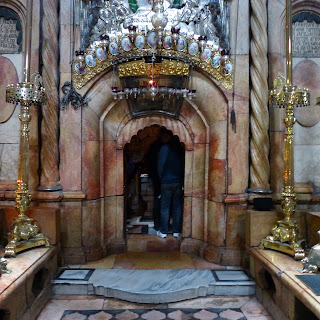My wife Valerie and I have just returned from a Hill Song music and leadership Conference in New York City . I didn’t know much about Hill Song, only that Valerie uses some of their music in our liturgy. When she said she was going to a conference in New York, it wasn’t Hill Song that I was interested in, it was the experience of visiting New York!
The conference was held at the historic Radio City Music Hall on the corner of 7th and 50th Avenue, one block from Time Square. The Music Hall was filled to capacity with over 6000 Christians (the majority of which seemed to me to be in their 20’s and 30’s). The music and worship was amazing and uplifting. The various speakers were inspiring and encouraging. The place was electric and alive with the Presence of God. And the whole thing - the conference and Hill Song - are Pentecostal.
There are aspects of the Pentecostal expression of Christian faith that don’t particularly sit well with me: the tendency toward biblical fundamentalism; the gospel of prosperity; the “are you saved” approach, to name some. I don’t like the repetition of the “amen” “allelulia” and “in Jesus Name”. Nor am I particularly fond of the hands in the air and jumping up and down.
Having said that, Pentecostalism seems to attract young people, and those who commit themselves to Pentecostalism, really commit themselves. In other words, Pentecostalism is doing something right.
As an Anglican within the more catholic stream of our diverse tradition, I tend towards a quieter spirituality. I like the practice of silence, of meditation and contemplation. I value the the sacraments and the rhythm of our liturgy and liturgical year. These are all good and important, but they do not necessarily attract and retain the unchurched or the young.
Having now visited the 9/11 memorial at the site of the Twin Towers in New York City, a horrible reminder of the evil of intolerance and hatred, I am reminded of our need to be open to learning about and learning from those who are different from ourselves.
On a very much smaller scale, as an Anglican, what can I learn from churches and traditions that are different from mine? What can I learn from churches that are connecting with younger people? What can I learn from churches that are growing and are making a difference in people’s lives?









































